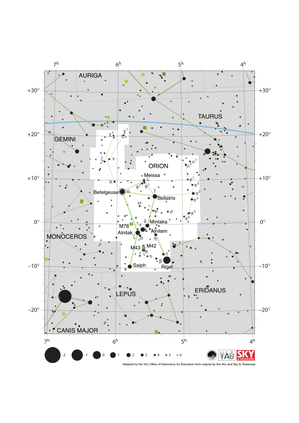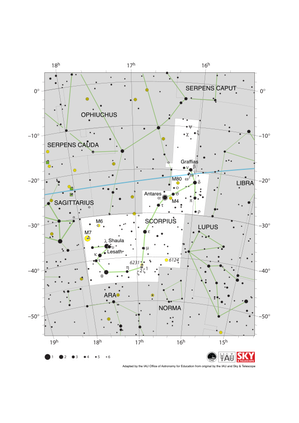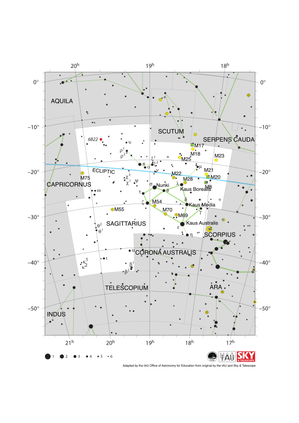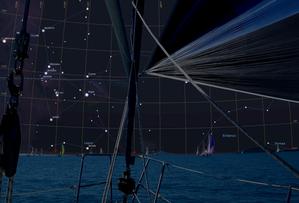Glossary term: Coordonnées célestes
Description: Depuis la Terre, nous percevons les objets célestes comme étant situés sur une sphère, traditionnellement appelée sphère céleste. Nous pouvons décrire n'importe quelle position sur cette sphère à l'aide de deux nombres. Toute méthode permettant d'attribuer deux nombres à une position dans le ciel est appelée système de coordonnées célestes, et les nombres sont appelés coordonnées (célestes) de l'objet.
À la surface de la Terre, nous utilisons la latitude et la longitude géographiques dans le même but et, en fait, une façon de définir les coordonnées célestes en découle : les points du ciel situés directement au-dessus de l'équateur terrestre forment l'équateur céleste, et le point situé directement au-dessus d'une certaine position sur le globe terrestre se voit attribuer des nombres d'une manière similaire à la latitude/longitude du point de base.
Les astronomes utilisent différents types de systèmes de coordonnées, dont un qui tient compte de la rotation quotidienne de la Terre, de sorte que les coordonnées sont universelles et utilisables partout sur Terre. Cela permet également de s'assurer que les coordonnées d'une étoile, par exemple, ne changent pas de manière significative au fil des jours, des mois ou des années.
Related Terms:
See this term in other languages
Term and definition status: The original definition of this term in English have been approved by a research astronomer and a teacher The translation of this term and its definition is still awaiting approval
The OAE Multilingual Glossary is a project of the IAU Office of Astronomy for Education (OAE) in collaboration with the IAU Office of Astronomy Outreach (OAO). The terms and definitions were chosen, written and reviewed by a collective effort from the OAE, the OAE Centers and Nodes, the OAE National Astronomy Education Coordinators (NAECs) and other volunteers. You can find a full list of credits here. All glossary terms and their definitions are released under a Creative Commons CC BY-4.0 license and should be credited to "IAU OAE".
If you notice a factual or translation error in this glossary term or definition then please get in touch.
Related Diagrams
Crux Constellation Map
Credit: Adapted by the IAU Office of Astronomy for Education from the original by IAU/Sky & Telescope.
License: CC-BY-4.0 Creative Commons Attribution 4.0 International (CC BY 4.0) icons
Orion Constellation Map
Credit: Adapted by the IAU Office of Astronomy for Education from the original by IAU/Sky & Telescope
License: CC-BY-4.0 Creative Commons Attribution 4.0 International (CC BY 4.0) icons
Libra Constellation Map
Credit: Adapted by the IAU Office of Astronomy for Education from the original by IAU/Sky & Telescope
License: CC-BY-4.0 Creative Commons Attribution 4.0 International (CC BY 4.0) icons
Scorpius Constellation Map
Credit: Adapted by the IAU Office of Astronomy for Education from the original by IAU/Sky & Telescope
License: CC-BY-4.0 Creative Commons Attribution 4.0 International (CC BY 4.0) icons
Sagittarius Constellation Map
Credit: Adapted by the IAU Office of Astronomy for Education from the original by IAU/Sky & Telescope
License: CC-BY-4.0 Creative Commons Attribution 4.0 International (CC BY 4.0) icons
Related Activities
Navigation in the Ancient Mediterranean and Beyond
astroEDU educational activity (links to astroEDU website) Description: Learn the ancient skill of Celestial Navigation
License: CC-BY-4.0 Creative Commons Attribution 4.0 International (CC BY 4.0) icons
Tags:
History
, Geography
, Celestial navigation
Age Ranges:
14-16
, 16-19
Education Level:
Middle School
, Secondary
Areas of Learning:
Discussion Groups
, Modelling
, Social Research
Costs:
Low Cost
Duration:
1 hour 30 mins
Group Size:
Group
Skills:
Analysing and interpreting data
, Asking questions
, Communicating information
, Developing and using models
, Planning and carrying out investigations
, Using mathematics and computational thinking














